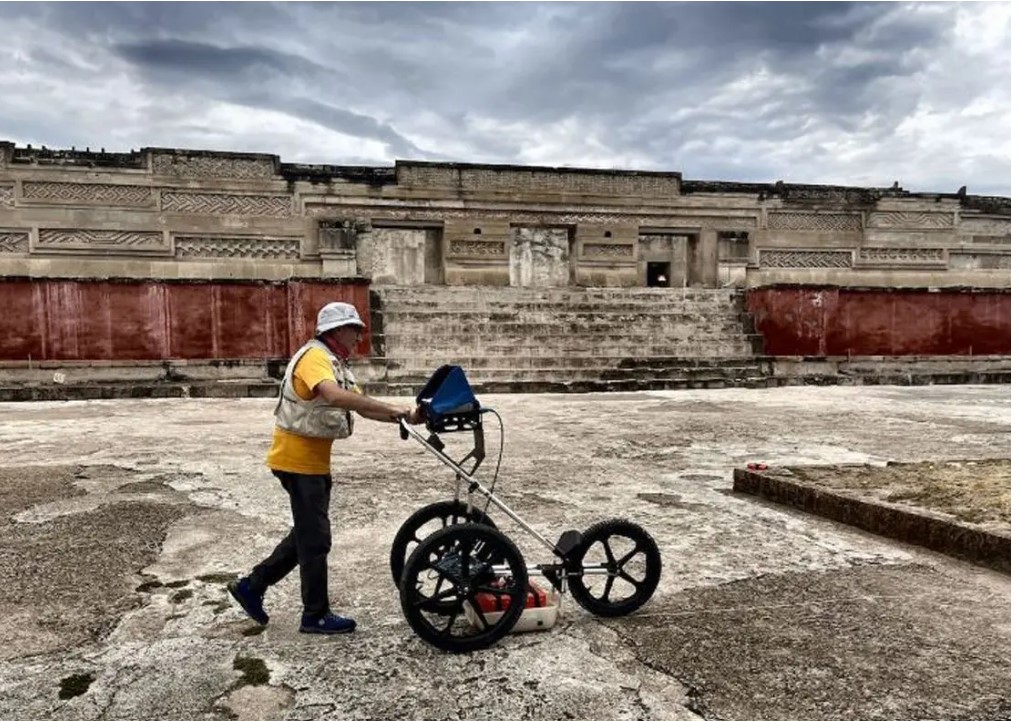GEOPHYSICAL STUDY SUPPORTS LEGEND OF ZAPOTEC “UNDERWORLD” AT MITLA
A recent geophysical investigation led by the National Institute of Anthropology and History (INAH) has brought forth intriguing indications of potential subterranean passages beneath the Church of San Pablo Apóstol at the Mitla Zapotec archaeological site. This discovery aligns with a local legend that associates the church with an underground maze serving as a link between the realms of the living and the dead. Referred to as Mictlán in Nahuatl, this place conveys the concept of the “underworld” or the “place of the dead.”
In the 17th century, Francisco Burgoa, a Dominican chronicler, recounted an account of Spanish missionaries exploring a network of tunnels below Mitla. However, they were deterred by unpleasant conditions, including foul odors, dampness, and chilling gusts of wind extinguishing their lights. These conditions led them to seal off what they perceived as an “infernal gate.”
The historical backdrop of Mitla traces back to the Zapotec civilization during the Classic Period (AD 100-650). This ancient religious hub is nestled in present-day San Pablo Villa de Mitla, situated in Oaxaca, Mexico. What sets Mitla apart is its architectural blend of Zapotec and Mixtec influences, exemplified by intricate mosaic patterns, geometric motifs, and ornate designs adorning tombs, panels, friezes, and the entire complex.
Using non-invasive techniques such as ground-penetrating radar, electrical resistivity tomography, and environmental seismic noise interferometry tomography, archaeologists from INAH undertook an exploration to uncover subterranean anomalies beneath the Church of San Pablo Apóstol. Their findings point towards the potential presence of a tunnel system behind the church, as well as hollow spaces beneath the sacristy and church courtyard.
INAH’s press release conveyed, “It appears highly plausible that the prominent Catholic church in Mitla stands atop the primary place of worship in the ancient Zapotec religion. However, these observations are preliminary and necessitate archaeological investigations to affirm their validity and scope.”
In conclusion, a recent geophysical inquiry led by INAH has unveiled potential evidence of underground features beneath the Church of San Pablo Apóstol in Mitla, resonating with a local belief associating the site with an ancestral underworld. These revelations hold promise but call for further archaeological exploration to definitively validate their significance.




